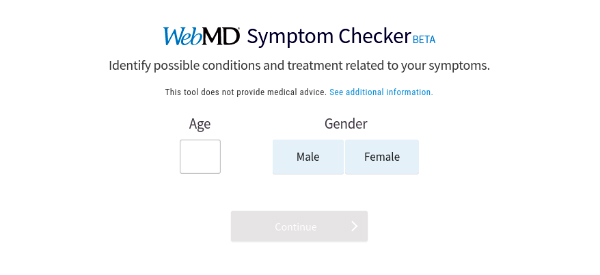
Massive numbers of people use the Internet to research and often self-diagnose physical and medical symptoms. “Patients’ Use of the Internet for Medical Information,” presented in May 2000 at the 23rd annual meeting of the Society of General Internal Medicine, in Boston, is still the most cited research on the topic. The study’s conclusion: “Primary care providers should recognize that patients are using the World Wide Web as a source of medical and health information and should be prepared to offer suggestions for Web-based health resources and to assist patients in evaluating the quality of medical information available on the Internet.”
In 2005 WebMD introduced its original online symptom checking tool. According to a WebMD press release, more than 75 million people now visit the website each month for information and news. Many visitors also check their symptoms. Considered the site’s flagship tool, WebMD has updated its online Symptom Checker with a major re-design. Still in Beta version (meaning it’s close but not yet final), the Symptom Checker’s new interface design goals were improved user experience and more accurate results. The interface is simple; just enter your age and gender and start describing how you feel or specific physical ailments. WebMD now uses a clinical decision support engine described as a “professional-grade diagnostic engine used by physicians to support their point-of-care decisions.” With three times more symptoms and conditions than the previous version, assembled by mapping clinical symptomology and diagnoses, the already heavily-accessed Symptom Checker will undoubtedly draw many additional users.
The WebMD Symptom Checker does not diagnose but provides possible conditions for various health conditions and diseases. Visitors are encouraged to consult with medical professionals and are directed to WebMD’s Physician Directory to find appropriate medical care in their area.

